Something that might be worth investigating are South Africa's so-called nukes. These were apparently scrapped at the end of apartheid, thus earning the country some much-needed goodwill in the world.
However, nobody has ever seen the nukes - active or dismantled.
South Africa - 'nuke bombs' and possible nuclear power - both likely to be frauds
9 posts
• Page 1 of 1
Re: South Africa's nukes
Definitely more proof that "nukes" are used like playing cards! Are you in South Africa Psygremlin?
-
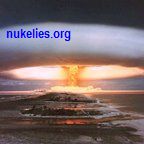
NUKELIES - Site Admin
- Posts: 302
- Joined: 17 Mar 2011 15:53
- Location: UK/USA
Re: South Africa's nukes
NUKELIES, it doesn't matter where he/she is! It turns out he hasn't got a clue.
I recommend David Irving's website https://www.fpp.co.uk for fairly even-tempered commentary on these 'single-minded' liars.
I recommend David Irving's website https://www.fpp.co.uk for fairly even-tempered commentary on these 'single-minded' liars.
-

rerevisionist - Site Admin
- Posts: 1056
- Joined: 18 Mar 2011 11:40
Re: South Africa's nukes
There may be an element of psychological connection between the portrayal of South African Whites as iconic evil and the German Nazis as iconic evil, and therefore both kin to each other, and both secretive, and both having secret nuclear weapons development. With both the nazis and the South African whites out of power, there's no official stateman to debunk anything said about them. Even to the extent of saying that the Nazis had contact with space aliens who showed them advanced technology in aircraft propulsion and weapons. I haven't heard that South Africans had that contact, but it might come out eventually.
-
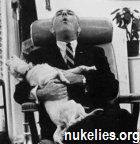
FirstClassSkeptic - Posts: 671
- Joined: 20 Mar 2011 21:19
Re: South Africa's nukes
Yes - the 'much-needed goodwill' is a bit of a giveaway. Incidentally, ny library has a book on secret nuclear deals between West Germany and South Africa - you can imagine the sort of thing. I found some comments by psygremlin online, but he/she/they clearly has no interest in truth, so no links etc.
-

rerevisionist - Site Admin
- Posts: 1056
- Joined: 18 Mar 2011 11:40
Re: South Africa's nukes
Koeberg nuclear power station - north of Cape Town - 'the only nuclear power station in South Africa and the entire African continent.'
'CCC' on an anti-relativity forum pointed this out to me. This installation has had a number of problems - including apparently serious incidents (such as the 'loose bolt') and mass departures of its personnel. Maybe somebody knows something about this, or can make inferences from online information?
'CCC' on an anti-relativity forum pointed this out to me. This installation has had a number of problems - including apparently serious incidents (such as the 'loose bolt') and mass departures of its personnel. Maybe somebody knows something about this, or can make inferences from online information?
-

rerevisionist - Site Admin
- Posts: 1056
- Joined: 18 Mar 2011 11:40
Re: South Africa's nukes
rerevisionist wrote: This installation has had a number of problems - including apparently serious incidents (such as the 'loose bolt') and mass departures of its personnel. Maybe somebody knows something about this, or can make inferences from online information?
Blacks can't run electrical power stations.
South Africa has coal deposits, and coal burning plants were built on top of coal mines, and created some of the most efficient and cheapest electrical production in the world, which is saying a lot. OR at least the most efficient in Africa, which isn't saying much.
The 'mass departures' of personnel are White people who have left South Africa since the blacks took over. Whites are severely discriminated against in hiring in South Africa now, so they have to leave to find work.
You would think that nuclear plants would be built in places that lacked fossil fuels, but the exact opposite seems to be the case.
-

FirstClassSkeptic - Posts: 671
- Joined: 20 Mar 2011 21:19
Re: South Africa - 'nuke bombs' and possible nuclear power
Arthur Kemp, a British-origin man whose family lived in South Africa, and who is a very good nationalist speaker and writer on race matters - such as immigration, and ancient Egypt as white - posted details on South Africa's (supposed) nuclear weapons and nuclear power programmes on his blog--
https://www.arthurkemp.com/2011/11/bomb-that-never-could-be-used-south.html
Arthur doesn't give sources, but there may (I suspect) be family connections. He is a fierce opponent of all conspiracy theories (apart from climate change) and I have no doubt believes everything about nukes is true. (He even uses nukes and the supposed man on the moon to illustrate the pinnacles of white creativity).
https://www.arthurkemp.com/2011/11/bomb-that-never-could-be-used-south.html
Arthur doesn't give sources, but there may (I suspect) be family connections. He is a fierce opponent of all conspiracy theories (apart from climate change) and I have no doubt believes everything about nukes is true. (He even uses nukes and the supposed man on the moon to illustrate the pinnacles of white creativity).
-

rerevisionist - Site Admin
- Posts: 1056
- Joined: 18 Mar 2011 11:40
Re: South Africa - 'nuke bombs' and possible nuclear power
What follows is from Arthur Kemp's blog, with permission. I presume everything is more-or-less officially accepted. (Most photos not copied - they simply aren't distinguishable from ordinary sheds etc):--
Thursday, 24 November 2011
The Bomb That Never Could Be Used: South Africa’s Nuclear Weapons
From the new version of March of the Titans, just released:
WHITE SOUTH AFRICA’S NUCLEAR BOMBS—SYMBOLIZES TECHNOLOGICAL ACHIEVEMENT AND FAILURE OF APARTHEID
Possibly the greatest display of white-ruled South Africa’s technological capability came with its development of nuclear weapons.
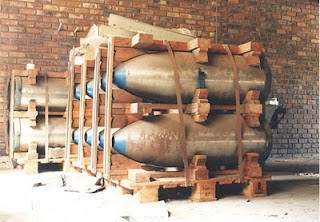
The casings for South Africa’s nuclear weapons, photographed at the Advena facility, near Pelindaba. Six weapons were completed, and a seventh was under construction when the project was halted.
White South Africa built six atom bombs by 1989 at the Pelindaba nuclear research facility which was to the west of Pretoria.
In 1989, the ruling National Party decided to hand power to black majority rule, but did not wish to see the weapons handed over to either a black government or one of the African National Congresses’ allies such as Libya.
The nuclear weapons project serves as testament to two important facts about white South Africa.
Firstly, it is yet another proof, if any was needed, of the falsity of the “environmental” theory of development. South Africa did not develop nuclear technology “just because” of its geographic location. The development was possible because of the race of the people who lived there, and had nothing to do with the geography, climate, or any other factor.
Secondly, the fact that white South Africa developed these weapons for supposed use against its enemies, shows the delusion under which the apartheid leaders lived. The policy of apartheid guaranteed that white South Africa would inevitably be overrun with blacks, and the possibility of using these weapons in any operational theater was, therefore, nonexistent.
White South Africa’s reliance on black labor meant that no matter where such a weapon might be aimed, whites and blacks alike would be targeted.
The nuclear weapons project stands as a tribute to Afrikaner technological and scientific ability, but was an exercise in political self-delusion, just like apartheid.”
=================
Additional information, not in the book, but which might be of interest to readers:
- The South African nuclear weapons project was publicly acknowledged in March 1993 by then state president F.W. de Klerk. It was only announced after the weaponry had been fully dismantled and the core elements destroyed or removed.
- The United States supplied South Africa with its first supply of Highly Enriched Uranium (HEU) for use at the Safari-1 research reactor, commissioned in 1965 at Pelindaba. The US supplied South Africa with about 100 kilograms of weapon-grade uranium fuel until 1975, when anti-Apartheid sanctions stopped the shipments.
- Apartheid South Africa then turned to Israel for further assistance with its nuclear weapons programme. It is still a matter of debate as to how much technology Israel supplied, but it was probably limited to tools rather than actual weaponry.
- South Africa stated its own HEU enrichment program in a small warehouse in central Pretoria. As it became more sophisticated, larger premises and stricter security were needed, and in the mid-1960s, the project was moved to Pelindaba.
- At the same time, South Africa started developing commercial applications for nuclear power plants, and in 1976, construction was started on the Koeberg nuclear power station to the north of Cape Town. Apart from providing electricity, Koeberg provided plausible deniability for the Pelindada research station.
- In 1970, the South African government announced that it was building the “Y-Plant at Valindaba,” located next door to Pelindaba. The Y-Plant was commissioned in 1974 and started producing HEU in 1978.
- In 1977, South Africa’s Atomic Energy Board (AEB) produced a first full-scale gun-type nuclear device prototype (as opposed to a just a ballistic test device) without an HEU core. This 3 ton bomb, was only meant to demonstrate feasibility of the weapon, and never for actual use.
- In 1973, a group of scientists working at the Sonchem facility in Somerset West, produced the mechanical subsystems for a gun-type nuclear device. They successfully tested their design in May 1974, which proved that a nuclear explosive was feasible.
- The Sonchem success convinced the AEB to upgrade the Pelindaba facility, and by 1977, had constructed a facility in “Building 5000,” and the Sonchem team was transferred to the Pretoria area. In this building, the gun-type device was successfully test-fired using a natural uranium projectile in 1976.
- Several other buildings at Pelindaba were then created for other parts of the weapons project:
- Building 5000 contained a pulse reactor for the experimental verification of theoretical computer models. In 1979, the reactor was used as a fast critical assembly in an experiment often referred to as "tickling the tail of the dragon" that proved the design of the gun-type device. The reactor was never again used as a pulse reactor and the facility was shut down in the early 1980s.
- Building 5100 contained the control room for Building 5000, offices, research and development laboratories and machining facilities for uranium, particularly buildings 5100 and 5200.
- Building 5200 housed a critical facility to verify separately the multiplication factors of the two parts of a nuclear explosive device, providing confidence that the gun-type design would work. The first nuclear explosive device was also assembled in this building in 1979.
- Building 5300 was designed exclusively as a laboratory for high explosives. Small quantities of high explosives were pressed and machined into shapes at this facility.
- By 1977, two test shafts (216 and 385 meters deep) had been drilled at the Vastrap military based outside Upington in the northern Cape’s Kalahari Desert, with the intention of conducting an “instrumented cold test” of the first prototype, using a depleted uranium core. This would have entailed a “dry run” for a real nuclear test. The test date was set for August 1977.
- The US government was officially — and secretly — informed of the plans to conduct the test. The American government urged the South Africans not to conduct the test, but (allegedly) kept the information to themselves.
- The test plans were only abandoned when a Soviet spy satellite detected the preparations and the Soviets notified the US of the discovery. The US was forced to bring diplomatic pressure to bear as news of the project spread, with the French government threatening to cancel the contract for the Koeberg reactor (which was based upon French designs).
- The Vastrap test site was abandoned, only to be opened again in 1987 when the test shafts were inspected and a corrugated iron shed built over the holes. The test shafts were publicly filled in with concrete in July 1993.
- By 1979, the Y-Plant had produced 55 kilograms of HEU (at 80% enrichment) which was made into a core for a second experimental device named “Melba.” This device was completed in 1980, and used in a “zero-yield test” (in which a nuclear chain reaction is initiated with negligible energy output). “Melba” was then stored in an abandoned coal mine at Witbank at a former military ammunitions depot, until it was moved to the Kentron “Circle” building near Pelindaba.
- By 1979, the state run arms manufacturer, Armscor, was handed control of the project to develop full-blown nuclear devices, with the AEB (now renamed the Atomic Energy Corporation or AEC) providing nuclear materials and development work.
- Armscor built a new facility, the Kentron Circle facility some 15 kilometers east of Pelindaba. The site, later renamed Advena, was commissioned in May 1981.
- At the Circle (“Advena”), Armscor extended the nuclear weapons programme from the gun-type weapons to inter-continental ballistic missile (ICBM) systems, and developed advanced warhead designs.
- It was at Advena that cooperation with Israel reached its zenith. Scientists from both countries worked on at least two missiles, codenamed RSA-3 and RSA-4 (RSA= “Republic of South Africa”), both developed from Israel’s Jericho II ICBM. One of the RSA-3 missiles, meant for satellite launch, is today on display at the Swatkorps Air Force museum. The RSA-4 missile could, allegedly, reach any target within a 7,000 kilometer radius while carrying a 700 kilogram nuclear warhead.
- The first floor of the Circle building had conventional workshops for making mechanical and electrical equipment; storage rooms; uranium casting and machining workshops; a large vault; integration rooms where portions of the devices were assembled; and eight "cells" for testing internal ballistics, propellants, igniters, and small quantities of high explosives for self-destruct mechanisms.
- An explosive test chamber located in one of the cells could handle up to 2.5 kilograms of high explosive. It was also used to conduct plane-wave experiments with shaped charges and to develop high-speed instrumentation for preliminary work on implosion designs. Another cell contained the "pig sty," a wood enclosure where projectile tests were done for the gun-type device.
- The designers put a "plenum" or large room above these cells. In an accident, this room would serve to dissipate the overpressure from an explosion, preventing the collapse of the roof or the walls. Holes at one end of the room would allow the explosion to vent. From the outside, the holes were disguised as ventilation ducts.
- In the early 1980s, the program employed about 100 people, of which only about 40 were directly involved in the weapons program and only 20 actually built the devices. By the time the program was canceled in 1989, the work force had risen to 300, with about half directly involved in weapons work.
- The weapons storage facility at Advena consisted of a high-security vault with many smaller vaults inside. Each nuclear device was divided into two sections, a front and back. With the HEU distributed between the two halves, the design minimised the possibility of accidental detonation or unauthorised use.
- A front and back end of a device were never worked on simultaneously. Both ends could leave the vault at the same time only after three top ministers and the head of government inserted their separate sections of the code into the vault. No one person had the complete code.
- - The total mass of a completed device was about one metric ton. It had a diameter of nearly 65 centimeters and was about 1.8 meters long. Each device contained an estimated 55 kilograms of HEU.
- In the mid-1980s, construction was started on a new facility, Advena Central Laboratories, close to the Circle building. This facility was intended to expand nuclear delivery options to ballistic missiles. Construction was completed just as the nuclear program was terminated.
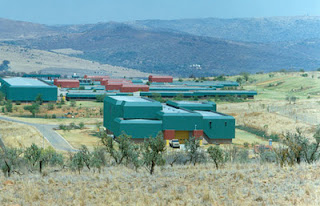
The Advena Central Laboratories, as they can be seen today. Commissioned to develop the nuclear ICBMs and other advanced weaponry, the facility was completed just as the nuclear weapons project was closed down.
- The Circle building, and planned new facility, were closed down when the weapons project was abandoned. By September 6, 1991 all of the HEU had been removed from the weapons, melted down, and sent back to the AEC for storage.
- Destruction of the major non-nuclear components of the weapons, detailed design drawings, and photos of components was completed by the end of 1992.
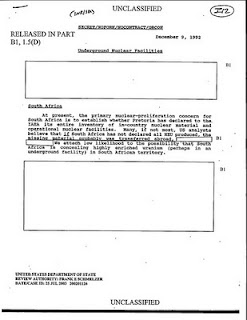
“Many, if not most, US analysts believe that if South Africa has not declared all HEU produced, the missing material probably was transferred abroad, REDACTED.” -- US State Department's Bureau of Intelligence and Research (INR), in its now declassified report “Underground Nuclear Facilities, December 9, 1992.”
The redacted part is most likely “to Israel” as there would be no other logical recipient of such material.
Thursday, 24 November 2011
The Bomb That Never Could Be Used: South Africa’s Nuclear Weapons
From the new version of March of the Titans, just released:
WHITE SOUTH AFRICA’S NUCLEAR BOMBS—SYMBOLIZES TECHNOLOGICAL ACHIEVEMENT AND FAILURE OF APARTHEID
Possibly the greatest display of white-ruled South Africa’s technological capability came with its development of nuclear weapons.

The casings for South Africa’s nuclear weapons, photographed at the Advena facility, near Pelindaba. Six weapons were completed, and a seventh was under construction when the project was halted.
White South Africa built six atom bombs by 1989 at the Pelindaba nuclear research facility which was to the west of Pretoria.
In 1989, the ruling National Party decided to hand power to black majority rule, but did not wish to see the weapons handed over to either a black government or one of the African National Congresses’ allies such as Libya.
The nuclear weapons project serves as testament to two important facts about white South Africa.
Firstly, it is yet another proof, if any was needed, of the falsity of the “environmental” theory of development. South Africa did not develop nuclear technology “just because” of its geographic location. The development was possible because of the race of the people who lived there, and had nothing to do with the geography, climate, or any other factor.
Secondly, the fact that white South Africa developed these weapons for supposed use against its enemies, shows the delusion under which the apartheid leaders lived. The policy of apartheid guaranteed that white South Africa would inevitably be overrun with blacks, and the possibility of using these weapons in any operational theater was, therefore, nonexistent.
White South Africa’s reliance on black labor meant that no matter where such a weapon might be aimed, whites and blacks alike would be targeted.
The nuclear weapons project stands as a tribute to Afrikaner technological and scientific ability, but was an exercise in political self-delusion, just like apartheid.”
=================
Additional information, not in the book, but which might be of interest to readers:
- The South African nuclear weapons project was publicly acknowledged in March 1993 by then state president F.W. de Klerk. It was only announced after the weaponry had been fully dismantled and the core elements destroyed or removed.
- The United States supplied South Africa with its first supply of Highly Enriched Uranium (HEU) for use at the Safari-1 research reactor, commissioned in 1965 at Pelindaba. The US supplied South Africa with about 100 kilograms of weapon-grade uranium fuel until 1975, when anti-Apartheid sanctions stopped the shipments.
- Apartheid South Africa then turned to Israel for further assistance with its nuclear weapons programme. It is still a matter of debate as to how much technology Israel supplied, but it was probably limited to tools rather than actual weaponry.
- South Africa stated its own HEU enrichment program in a small warehouse in central Pretoria. As it became more sophisticated, larger premises and stricter security were needed, and in the mid-1960s, the project was moved to Pelindaba.
- At the same time, South Africa started developing commercial applications for nuclear power plants, and in 1976, construction was started on the Koeberg nuclear power station to the north of Cape Town. Apart from providing electricity, Koeberg provided plausible deniability for the Pelindada research station.
- In 1970, the South African government announced that it was building the “Y-Plant at Valindaba,” located next door to Pelindaba. The Y-Plant was commissioned in 1974 and started producing HEU in 1978.
- In 1977, South Africa’s Atomic Energy Board (AEB) produced a first full-scale gun-type nuclear device prototype (as opposed to a just a ballistic test device) without an HEU core. This 3 ton bomb, was only meant to demonstrate feasibility of the weapon, and never for actual use.
- In 1973, a group of scientists working at the Sonchem facility in Somerset West, produced the mechanical subsystems for a gun-type nuclear device. They successfully tested their design in May 1974, which proved that a nuclear explosive was feasible.
- The Sonchem success convinced the AEB to upgrade the Pelindaba facility, and by 1977, had constructed a facility in “Building 5000,” and the Sonchem team was transferred to the Pretoria area. In this building, the gun-type device was successfully test-fired using a natural uranium projectile in 1976.
- Several other buildings at Pelindaba were then created for other parts of the weapons project:
- Building 5000 contained a pulse reactor for the experimental verification of theoretical computer models. In 1979, the reactor was used as a fast critical assembly in an experiment often referred to as "tickling the tail of the dragon" that proved the design of the gun-type device. The reactor was never again used as a pulse reactor and the facility was shut down in the early 1980s.
- Building 5100 contained the control room for Building 5000, offices, research and development laboratories and machining facilities for uranium, particularly buildings 5100 and 5200.
- Building 5200 housed a critical facility to verify separately the multiplication factors of the two parts of a nuclear explosive device, providing confidence that the gun-type design would work. The first nuclear explosive device was also assembled in this building in 1979.
- Building 5300 was designed exclusively as a laboratory for high explosives. Small quantities of high explosives were pressed and machined into shapes at this facility.
- By 1977, two test shafts (216 and 385 meters deep) had been drilled at the Vastrap military based outside Upington in the northern Cape’s Kalahari Desert, with the intention of conducting an “instrumented cold test” of the first prototype, using a depleted uranium core. This would have entailed a “dry run” for a real nuclear test. The test date was set for August 1977.
- The US government was officially — and secretly — informed of the plans to conduct the test. The American government urged the South Africans not to conduct the test, but (allegedly) kept the information to themselves.
- The test plans were only abandoned when a Soviet spy satellite detected the preparations and the Soviets notified the US of the discovery. The US was forced to bring diplomatic pressure to bear as news of the project spread, with the French government threatening to cancel the contract for the Koeberg reactor (which was based upon French designs).
- The Vastrap test site was abandoned, only to be opened again in 1987 when the test shafts were inspected and a corrugated iron shed built over the holes. The test shafts were publicly filled in with concrete in July 1993.
- By 1979, the Y-Plant had produced 55 kilograms of HEU (at 80% enrichment) which was made into a core for a second experimental device named “Melba.” This device was completed in 1980, and used in a “zero-yield test” (in which a nuclear chain reaction is initiated with negligible energy output). “Melba” was then stored in an abandoned coal mine at Witbank at a former military ammunitions depot, until it was moved to the Kentron “Circle” building near Pelindaba.
- By 1979, the state run arms manufacturer, Armscor, was handed control of the project to develop full-blown nuclear devices, with the AEB (now renamed the Atomic Energy Corporation or AEC) providing nuclear materials and development work.
- Armscor built a new facility, the Kentron Circle facility some 15 kilometers east of Pelindaba. The site, later renamed Advena, was commissioned in May 1981.
- At the Circle (“Advena”), Armscor extended the nuclear weapons programme from the gun-type weapons to inter-continental ballistic missile (ICBM) systems, and developed advanced warhead designs.
- It was at Advena that cooperation with Israel reached its zenith. Scientists from both countries worked on at least two missiles, codenamed RSA-3 and RSA-4 (RSA= “Republic of South Africa”), both developed from Israel’s Jericho II ICBM. One of the RSA-3 missiles, meant for satellite launch, is today on display at the Swatkorps Air Force museum. The RSA-4 missile could, allegedly, reach any target within a 7,000 kilometer radius while carrying a 700 kilogram nuclear warhead.
- The first floor of the Circle building had conventional workshops for making mechanical and electrical equipment; storage rooms; uranium casting and machining workshops; a large vault; integration rooms where portions of the devices were assembled; and eight "cells" for testing internal ballistics, propellants, igniters, and small quantities of high explosives for self-destruct mechanisms.
- An explosive test chamber located in one of the cells could handle up to 2.5 kilograms of high explosive. It was also used to conduct plane-wave experiments with shaped charges and to develop high-speed instrumentation for preliminary work on implosion designs. Another cell contained the "pig sty," a wood enclosure where projectile tests were done for the gun-type device.
- The designers put a "plenum" or large room above these cells. In an accident, this room would serve to dissipate the overpressure from an explosion, preventing the collapse of the roof or the walls. Holes at one end of the room would allow the explosion to vent. From the outside, the holes were disguised as ventilation ducts.
- In the early 1980s, the program employed about 100 people, of which only about 40 were directly involved in the weapons program and only 20 actually built the devices. By the time the program was canceled in 1989, the work force had risen to 300, with about half directly involved in weapons work.
- The weapons storage facility at Advena consisted of a high-security vault with many smaller vaults inside. Each nuclear device was divided into two sections, a front and back. With the HEU distributed between the two halves, the design minimised the possibility of accidental detonation or unauthorised use.
- A front and back end of a device were never worked on simultaneously. Both ends could leave the vault at the same time only after three top ministers and the head of government inserted their separate sections of the code into the vault. No one person had the complete code.
- - The total mass of a completed device was about one metric ton. It had a diameter of nearly 65 centimeters and was about 1.8 meters long. Each device contained an estimated 55 kilograms of HEU.
- In the mid-1980s, construction was started on a new facility, Advena Central Laboratories, close to the Circle building. This facility was intended to expand nuclear delivery options to ballistic missiles. Construction was completed just as the nuclear program was terminated.

The Advena Central Laboratories, as they can be seen today. Commissioned to develop the nuclear ICBMs and other advanced weaponry, the facility was completed just as the nuclear weapons project was closed down.
- The Circle building, and planned new facility, were closed down when the weapons project was abandoned. By September 6, 1991 all of the HEU had been removed from the weapons, melted down, and sent back to the AEC for storage.
- Destruction of the major non-nuclear components of the weapons, detailed design drawings, and photos of components was completed by the end of 1992.

“Many, if not most, US analysts believe that if South Africa has not declared all HEU produced, the missing material probably was transferred abroad, REDACTED.” -- US State Department's Bureau of Intelligence and Research (INR), in its now declassified report “Underground Nuclear Facilities, December 9, 1992.”
The redacted part is most likely “to Israel” as there would be no other logical recipient of such material.
-

rerevisionist - Site Admin
- Posts: 1056
- Joined: 18 Mar 2011 11:40
9 posts
• Page 1 of 1
Return to Nuke Scams Past: Nuclear Plans & Conspiracies & Funds, Wars, Hoax Maintenance
Who is online
Users browsing this forum: No registered users and 1 guest